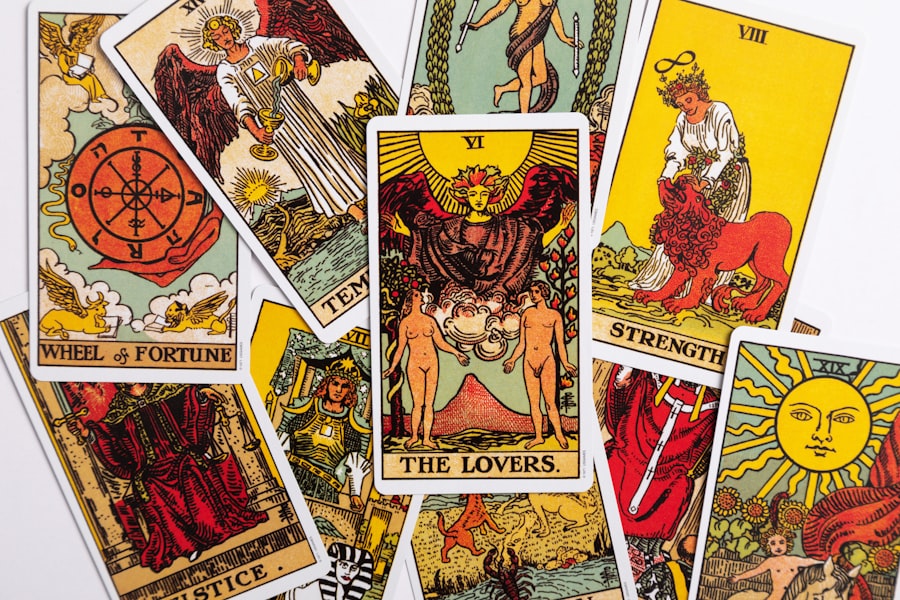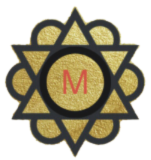
Tarot, a centuries-old divination tool, has captivated the minds and hearts of many seeking insight into their lives. Originating in the 15th century as a card game in Europe, it has evolved into a profound spiritual practice that offers guidance, reflection, and self-discovery. The Tarot deck consists of 78 cards, divided into the Major Arcana, which represents significant life events and spiritual lessons, and the Minor Arcana, which reflects everyday experiences and challenges.
Each card is rich with symbolism and meaning, allowing individuals to tap into their intuition and explore their subconscious thoughts.
Mornings are often a time of transition, where the mind shifts from the dream state to the waking world.
By engaging with Tarot during this time, individuals can harness the energy of new beginnings and clarity. This practice not only fosters a deeper connection with oneself but also encourages mindfulness and intentionality as one navigates the complexities of daily life. As the day unfolds, the insights gained from a morning Tarot session can serve as a guiding compass, helping individuals make decisions aligned with their true selves.
Key Takeaways
- Tarot can be a powerful tool for setting intentions and gaining insight in morning routines.
- Setting intentions with tarot cards involves focusing on specific goals or desires for the day ahead.
- Using tarot for daily reflection and insight can help provide clarity and guidance in decision-making.
- Incorporating tarot into meditation and mindfulness practices can deepen self-awareness and spiritual connection.
- Creating a tarot spread for daily guidance can offer personalized insight and direction for the day ahead.
- Consistent tarot practice in the morning can be enhanced by setting a dedicated space, journaling, and seeking support from tarot communities.
Setting Intentions with Tarot Cards
Setting intentions is a powerful practice that can significantly enhance one’s focus and motivation throughout the day. When combined with Tarot, this process becomes even more profound. By selecting a card that resonates with one’s aspirations or goals for the day, individuals can create a tangible reminder of their intentions.
For instance, drawing The Sun card may symbolize a desire for positivity and joy, while The Chariot could represent determination and the drive to overcome obstacles. This act of choosing a card not only clarifies one’s intentions but also infuses the day with purpose. Moreover, the act of interpreting the chosen card can deepen one’s understanding of their intentions.
For example, if someone draws The Empress, they might reflect on themes of nurturing and creativity. This reflection can lead to actionable steps, such as dedicating time to a creative project or reaching out to loved ones for support. By engaging with the symbolism of the card, individuals can align their actions with their intentions, creating a harmonious flow throughout their day.
This practice encourages a proactive mindset, allowing individuals to approach challenges with clarity and confidence.
Using Tarot for Daily Reflection and Insight

Daily reflection is an essential component of personal growth and self-awareness. Tarot serves as an excellent tool for this practice, offering insights that may not be immediately apparent in the hustle and bustle of everyday life. By taking a few moments each morning to draw cards and reflect on their meanings, individuals can gain valuable perspectives on their current circumstances.
For instance, drawing The Hermit may prompt one to consider whether they need time for introspection or solitude, while The Fool could encourage embracing new opportunities with an open heart. In addition to providing insights into current situations, Tarot can also illuminate patterns and themes that may be influencing one’s life. By regularly engaging with the cards, individuals can begin to recognize recurring motifs in their readings.
For example, if The Tower appears frequently, it may indicate a need to confront upheaval or change in one’s life. This awareness allows for proactive decision-making and encourages individuals to address underlying issues rather than merely reacting to surface-level challenges. Through this reflective practice, Tarot becomes not just a tool for divination but a mirror reflecting one’s inner landscape.
Incorporating Tarot into Meditation and Mindfulness Practices
Meditation and mindfulness are practices that cultivate presence and awareness, making them ideal companions for Tarot work. By integrating Tarot into meditation sessions, individuals can deepen their connection to both the cards and their own intuition. One effective method is to select a card before meditating and focus on its imagery and symbolism during the session.
This approach allows for a meditative exploration of the card’s meaning, fostering insights that may arise during moments of stillness. For example, if one draws The High Priestess, they might meditate on themes of intuition and inner wisdom. As they sit in silence, they can visualize themselves embodying the qualities of The High Priestess—trusting their instincts and embracing their inner voice.
This practice not only enhances understanding of the card but also encourages individuals to listen to their intuition in daily life. By creating a sacred space for both meditation and Tarot work, practitioners can cultivate a deeper sense of peace and clarity that permeates their entire day.
Creating a Tarot Spread for Daily Guidance
A Tarot spread is a specific layout of cards that provides structure to readings and helps focus on particular questions or themes. Designing a daily spread tailored to personal needs can be an enriching experience that offers guidance for navigating daily challenges. A simple three-card spread can be particularly effective: one card for past influences, one for present circumstances, and one for future guidance.
For instance, if someone draws The Lovers in the past position, it may indicate that recent decisions regarding relationships have shaped their current emotional landscape. The present card could be The Five of Cups, suggesting feelings of loss or disappointment that need addressing.
Finally, drawing The Star in the future position may offer hope and healing as they move forward. This structured approach not only provides clarity but also encourages individuals to engage with their readings actively. By reflecting on each card’s meaning in relation to their life, practitioners can glean actionable insights that inform their choices throughout the day.
Conclusion and Tips for Consistent Tarot Practice in the Morning

Establishing a consistent morning Tarot practice requires intention and commitment but can yield profound benefits over time. To cultivate this habit effectively, individuals might consider setting aside a specific time each morning dedicated solely to Tarot work. Creating a serene environment—perhaps with soft lighting or calming music—can enhance focus and make the experience more enjoyable.
Additionally, keeping a Tarot journal can be invaluable for tracking insights gained from daily readings and reflecting on how they manifest in real life. Another helpful tip is to approach each session with an open mind and heart. Rather than seeking specific answers or outcomes, allow the cards to guide you toward what you need to know in that moment.
Embrace the process as an exploration rather than a destination; this mindset fosters curiosity and encourages deeper engagement with the cards. Over time, as individuals develop their intuitive skills through consistent practice, they may find that Tarot becomes an indispensable tool for navigating life’s complexities with grace and clarity.
If you are interested in enhancing your morning routine with tarot, you may also want to explore the world of numerology. Understanding numerology can provide valuable insights into your personality, strengths, and life path. Check out this article on Understanding Numerology Charts: Insights into Personality Strengths and Life Path to learn more about how numbers can influence your daily life and routines. By combining the wisdom of tarot and numerology, you can create a powerful morning ritual that sets the tone for a successful day ahead.
FAQs
What is Tarot?
Tarot is a form of divination that uses a deck of cards to gain insight into past, present, and future events. Each card in the deck holds symbolic meanings that can be interpreted in various ways.
How can Tarot enhance my morning routine?
Using Tarot cards in your morning routine can provide guidance, clarity, and inspiration for the day ahead. It can help you set intentions, gain insight into potential challenges, and cultivate a positive mindset.
How do I incorporate Tarot into my morning routine?
You can incorporate Tarot into your morning routine by pulling a card or a few cards to reflect on, meditate with, or journal about. You can also use Tarot spreads specifically designed for morning rituals.
Is Tarot a religious practice?
Tarot is not inherently tied to any specific religion. It is a tool for self-reflection, personal growth, and gaining insight, and can be used by people of various spiritual and religious beliefs.
Can anyone use Tarot cards?
Yes, anyone can use Tarot cards. There are no specific requirements or restrictions for using Tarot as a tool for personal reflection and insight.






